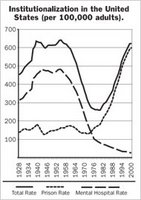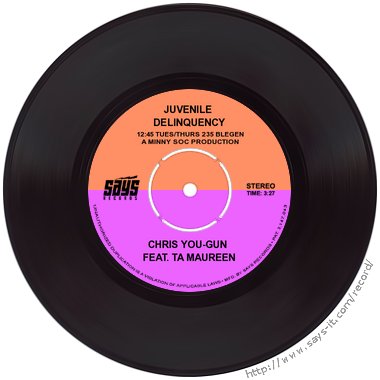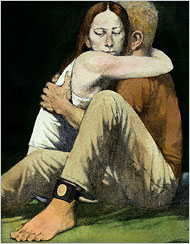 bernard harcourt, my gracious host on a recent visit to chicago law, offered a provocative op-ed in the times this week. shouldn’t sociological criminologists be able to offer some explanation for the figure at left, showing the aggregate rate of institutionalization for prisons and mental hospitals? in my opinion, the questions posed by professor harcourt might also make for some outstanding dissertations:
bernard harcourt, my gracious host on a recent visit to chicago law, offered a provocative op-ed in the times this week. shouldn’t sociological criminologists be able to offer some explanation for the figure at left, showing the aggregate rate of institutionalization for prisons and mental hospitals? in my opinion, the questions posed by professor harcourt might also make for some outstanding dissertations:
Why did we diagnose deviance in such radically different ways over the course of the 20th century? Do we need to be imprisoning at such high rates, or were we right, 50 years ago, to hospitalize instead? Why were so many women hospitalized? Why have they been replaced by young black men? Have both prisons and mental hospitals included large numbers of unnecessarily incarcerated individuals?









